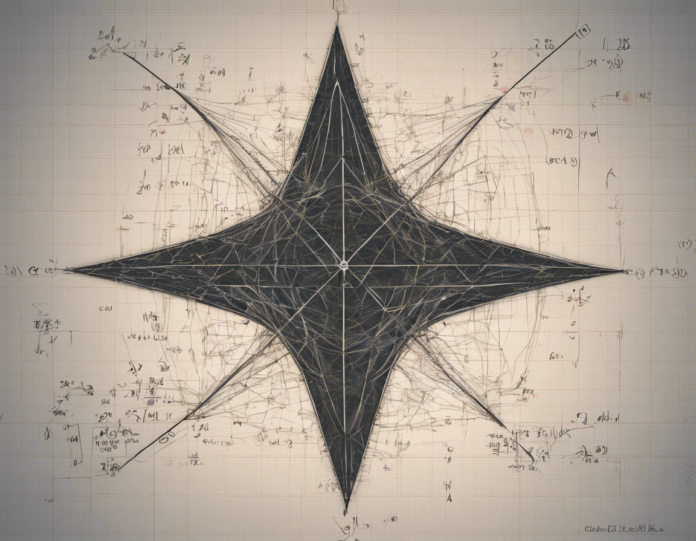Introduction
In the world of mathematics, many formulas and equations are designed to help solve various problems. One such formula that is commonly used is the A^3-B^3 formula. This formula is used to factorize the difference of cubes, where A and B represent any two numbers. Understanding and mastering this formula can greatly aid in simplifying complex expressions and solving mathematical problems efficiently. In this comprehensive guide, we will delve deep into the A^3-B^3 formula, explore its applications, provide examples of how to use it, and address common misconceptions.
What is the A^3-B^3 Formula?
The A^3-B^3 formula is a special case of factorization that deals with the difference of cubes. It states that:
A^3 - B^3 = (A - B)(A^2 + AB + B^2)
This formula can be derived using the following steps:
- Write the given expression in the form of (A^3 - B^3).
- Express the expression as (A - B)(A^2 + AB + B^2) by factoring out the common terms.
Applications of the A^3-B^3 Formula
The A^3-B^3 formula is widely used in algebra, calculus, and various branches of mathematics. Some common applications of this formula include:
- Simplifying Algebraic Expressions: The A^3-B^3 formula can be used to simplify complex algebraic expressions by factoring out the difference of cubes.
- Solving Equations: It can be applied to solve equations involving cubes, making it easier to find the roots or solutions.
- Proving Identities: The formula can be used to prove trigonometric identities and other mathematical equations involving cubes.
Example Problems
Let's look at some example problems to better understand how to apply the A^3-B^3 formula:
- Example 1: Factorize the expression 8x^3 - 27y^3.
Solution: Using the A^3-B^3 formula, we have A = 2x and B = 3y. Therefore, the factorized form is:
8x^3 - 27y^3 = (2x - 3y)(4x^2 + 6xy + 9y^2)
- Example 2: Solve the equation x^3 - 64 = 0.
Solution: We can rewrite the equation as x^3 - 4^3 = 0. Applying the A^3-B^3 formula with A = x and B = 4, we get:
(x - 4)(x^2 + 4x + 16) = 0
Solving further, we find that x = 4 is one of the roots of the equation.
Common Misconceptions
Despite its usefulness, the A^3-B^3 formula can sometimes lead to misconceptions. Here are some common misconceptions associated with this formula:
-
Mistaking for the Difference of Squares: Some students confuse the A^3-B^3 formula with the difference of squares formula (A^2 - B^2). It is essential to differentiate between the two formulas to avoid errors in factorization.
-
Incorrect Application: Incorrectly applying the A^3-B^3 formula can lead to errors in simplification. It is crucial to understand when and how to use the formula to achieve accurate results.
Advanced Concepts
In advanced mathematics, the A^3-B^3 formula can be extended to higher powers and more complex expressions. Some advanced concepts related to this formula include:
-
Generalization to Higher Powers: The A^3-B^3 formula can be generalized to higher powers such as A^4-B^4, A^5-B^5, and so on. The pattern of factorization remains similar, involving the difference of powers.
-
Applications in Calculus: The A^3-B^3 formula is utilized in calculus to simplify expressions and solve limits involving cubes. Understanding this formula can facilitate the process of differentiation and integration.
Frequently Asked Questions (FAQs)
-
What is the Difference of Cubes?
The difference of cubes refers to the algebraic expression A^3 - B^3, where A and B are any two numbers. -
When should I use the A^3-B^3 formula?
You should use the A^3-B^3 formula when you encounter expressions involving the difference of cubes that can be factorized. -
Can the A^3-B^3 formula be applied to variables and constants?
Yes, the formula can be applied to expressions containing variables, constants, or a combination of both. -
How do I remember the A^3-B^3 formula?
One way to remember the formula is to practice deriving it from scratch a few times until you can quickly recall it when needed. -
Are there any alternative methods to factorize the difference of cubes?
While there are alternative methods to factorize the difference of cubes, the A^3-B^3 formula is the most efficient and commonly used method. -
Can the A^3-B^3 formula be used for sum of cubes as well?
The A^3-B^3 formula specifically deals with the difference of cubes. For the sum of cubes, a different formula, (A + B)(A^2 - AB + B^2), is used. -
What are some real-life applications of the A^3-B^3 formula?
The A^3-B^3 formula is not only useful in mathematics but also finds applications in physics, engineering, and computer science for solving various types of problems involving cubes.
Conclusion
Mastering the A^3-B^3 formula is an essential skill for anyone studying mathematics or related fields. By understanding the formula, its applications, and how to apply it to solve problems, you can enhance your problem-solving abilities and tackle complex mathematical expressions with ease. Practice using the A^3-B^3 formula with different examples to solidify your understanding and become proficient in factorizing the difference of cubes.


Recent comments